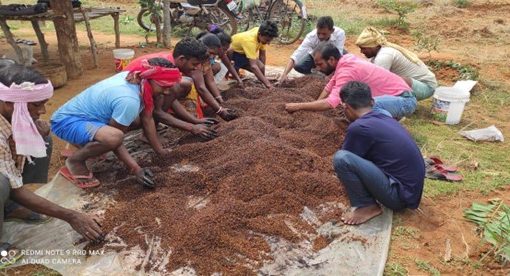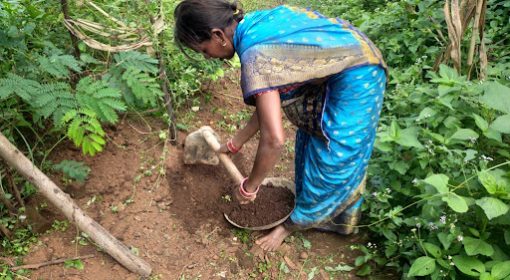by Francesco Sambalino
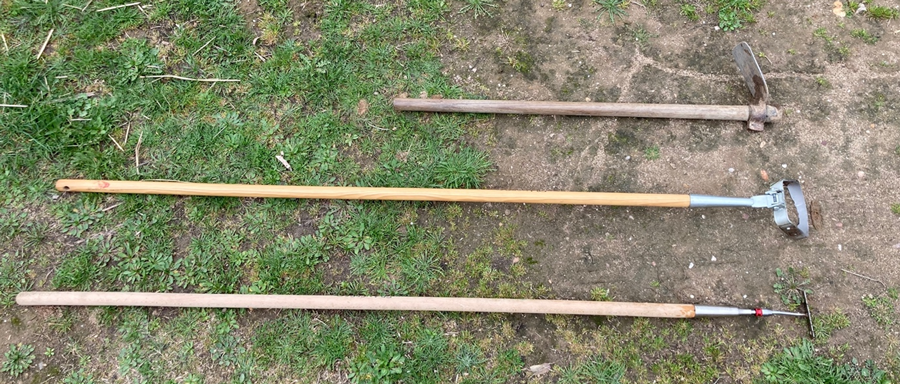
When talking about tools and increasing labour productivity, we automatically think of tractors, combine harvesters, and sprayers. However, on small vegetable farms, the bulk of the work is done with hand tools, and there is an enormous difference between one tool and the other.
The operations are many: unless you run a no-till farm, you start by preparing the ground and creating a fine seedbed to welcome seeds or seedlings. You must then handle weeds and water plants throughout the season and sometimes prune them. When ripe, you then harvest the produce just in time to start the cycle again.
Tools exist for each operation, and while their high-tech motorized cousins continuously evolve, improved hand tools are niche.
Weeding is commonly the task that requires the most time and effort. You think weeding; you talk hoes: one of the oldest tools to humankind. As simple as ubiquitous.
Hoes have existed since the dawn of agriculture. The testimony comes straight from Sumerian mythology scripts dating back to as early as the 3rd millennium before Christ.
In Europe, the Romans then introduced the eye-hoe – a design that is still with us: a sharp metal blade with an eye at one end where to secure a wooden handle (left hoe, in the picture below).
If you close your eyes and think of a hoe, you probably think of an eye-hoe, the most common type of draw hoe. Draw hoes are used for working the ground up to 10 cm in depth. Farmers drive it into the soil in a chopping motion, using two hands, and then pull it towards their bodies to dislocate chunks of soil.
Although primarily used for digging and moving soil, people also use draw hoes with smaller blades for weeding. However, they are not the best hoes for the task. Scuffle hoes should be used instead.Scuffle hoes are lighter tools to scrape the soil superficially and kill weeds efficiently by damaging their roots when they are most delicate.
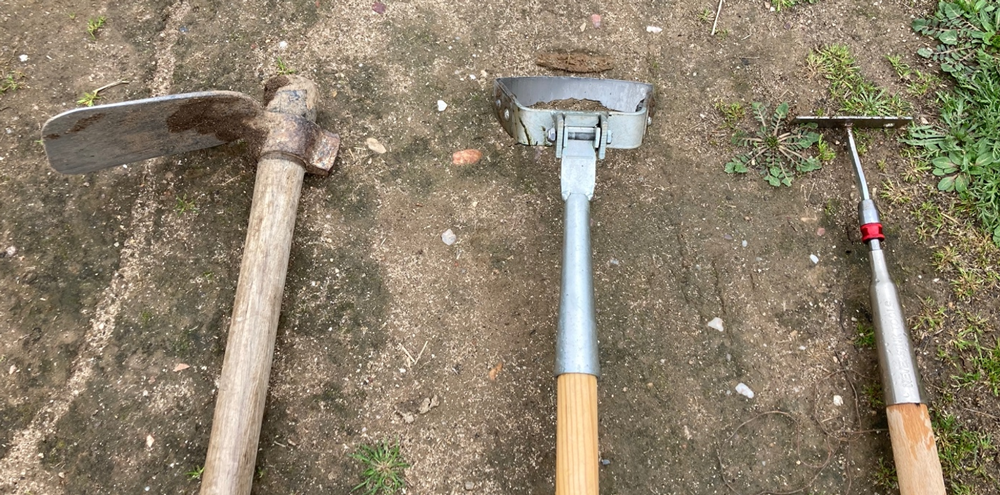
We see draw hoes everywhere, but the same isn’t true for scuffle hoes. Too many times, bare hands or draw hoes are used instead. The draw hoe will work well in controlling weeds, but it is an overkill. It requires more energy and time, and takes a heavy toll on your body, especially with the all-too-common short handle versions you see around.
It is like facing a bear with a bazooka or barehand, instead of having the appropriate rifle: you are either over-equipped or under-equipped.
The other day we did a little experiment. We weeded two garden beds of 10 meters. What took 7 minutes ad 15 seconds with a short-handled draw hoe, took only 5 minutes with a scuffle hoe (stirrup in the figure above). The grunting and swearing was reduced sixfold.
The right tool for the right job
There are many kinds of scuffle hoes, and everyone has their favourite. Here is a short description of the hoes we use daily.
There is the stirrup hoe: a smartly designed hoe head that we use when we have to clean a garden bed of weeds that have passed their teens. It is stronger than the other scuffle hoes and can also be used to break the soil surface lightly. It has a hinge that allows the attached hoe head to swivel back and forth. This neat design enables the farmer to cut through weeds when pulling and when drawing the tool back. This is excellent for the economy of movements as it effectively cuts the number of times you need to move the tool by half.
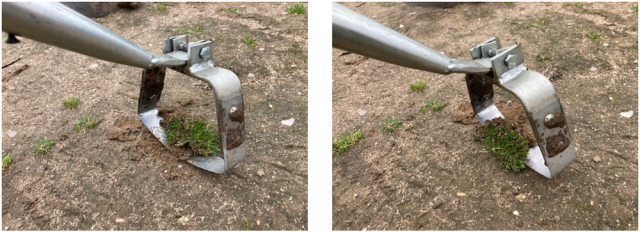
There is the collinear hoe: This tool is a clever, simple hoe head. If the garden bed soil has a good tilth and the weeds are young, this is probably the tool for the job. It is used to disturb weeds at emergence when they are the easiest to control. The small blade is scraped just a centimeter under the soil surface to knock weeds out. It was designed to work with the back perfectly straight, thumbs up, and with a perfect economy of movements. When using this tool, you’d think you are sweeping the kitchen floor with a long stick broom. Fast and clean.
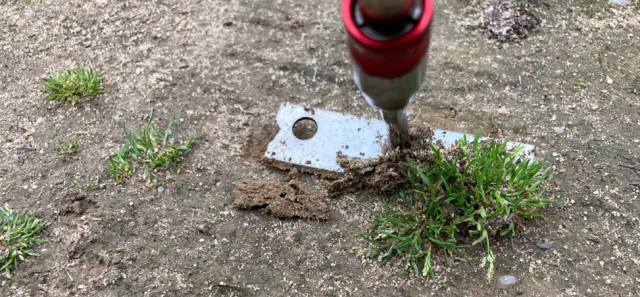
There is the wire hoe: This tool is the sniper in the horticulturalists’ hands. It is precise and allows you to get very close to plants without damaging them. A steel wire hoop replaces the blade. It is blunt, and for this reason it won’t easily damage the plants you are growing. It is perfect for navigating tight corners and handling the most hidden weeds. There is a catch, though. Even more than the collinear hoe, this tool won’t do much if you don’t have a good soil tilth.
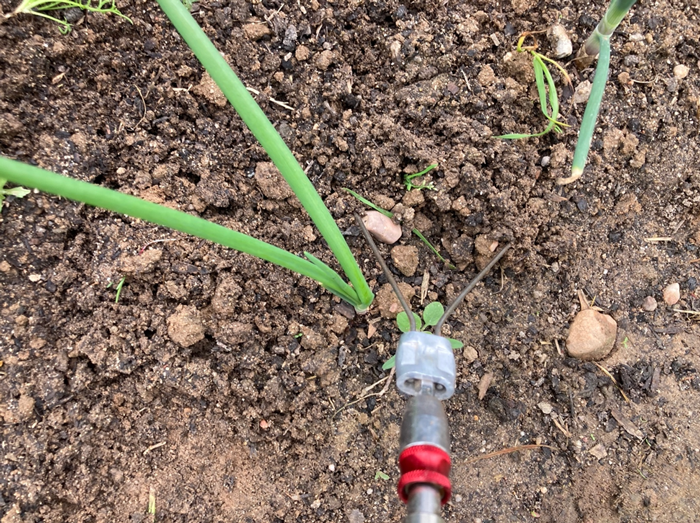
These simple tools make your life so much easier. Their simplicity contrasts with their low adoption found outside specialized market gardeners’ circles. They are so simple that a blacksmith apprentice could replicate them blindfolded.
One neat evolution of these hoes is the wheel hoe. Ever heard of it? Get a wheel barrel, strip it of its container and attach a hoe head to the bottom, in between the wheel and the handles. You have a crappy wheel hoe prototype, but you got the idea. Of course, it was refined, made lighter, and agile. Experiments in India have recently shown how wheel hoes reduce weeding time to between a half and a fourth of the time needed with a traditional weeding knife (Khurpi) (Shahi, 2018; Bajpai, 2018).
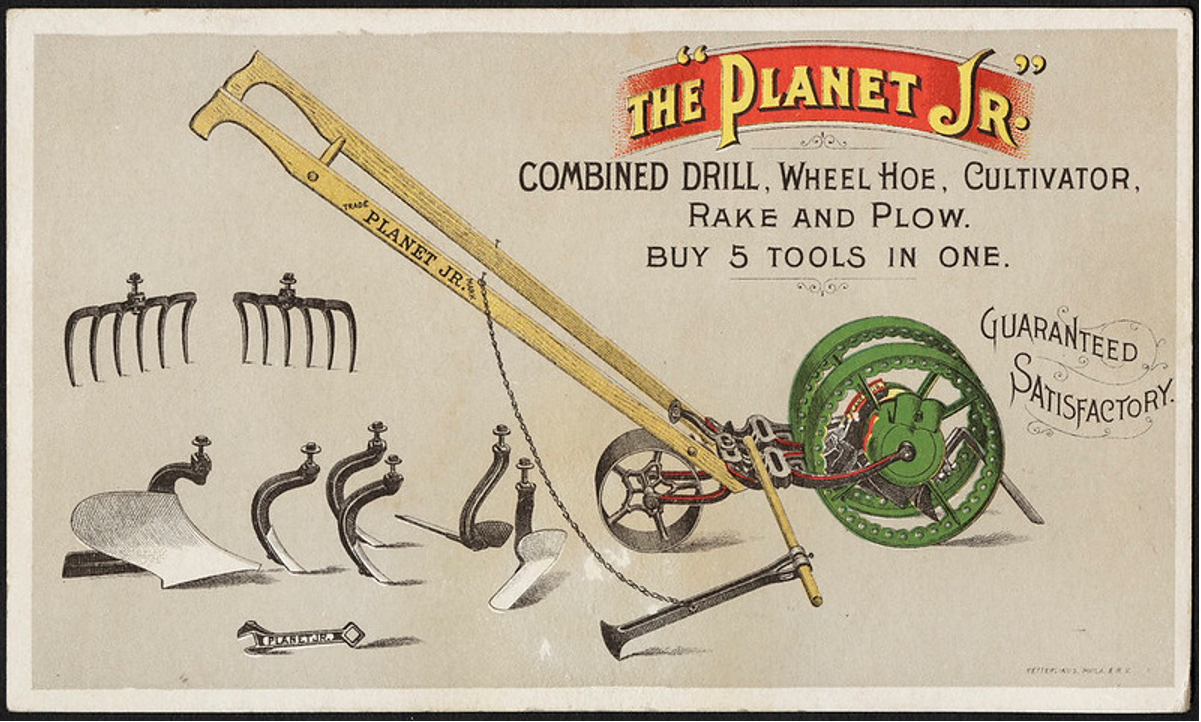
Ergonomics
Once you’ve chosen the type of scuffle hoe you want to use, some features need consideration to make your life even easier.
The handle must be long enough to comfortably work upright and possibly with both thumbs pointing up while holding it. If you try that yourself, you’ll notice that you are holding your hands in a neutral position without straining your wrists. It is difficult, if not impossible, to do that with a short handle. You’d need a handle that reaches the area between your shoulders and your nose. It is the same grip used to hold a broom to sweep the floor. And yes, many times also brooms need longer sticks.
The finger grip is another forgotten design flaw. Most handles producers have a one size fits all approach. However, hands are very different. When a handle is too thick, your grip is too loose, and you are likely to strain your hands because of the extra force required on those tiny hand muscles. What you need is a finger lock. The fingers should easily encircle the handle. To find the right handle diameter, make the ok sign with your hand and measure the diameter of the space formed. That’s the right handle size. However, the best grip could also be measured using a hand dynamometer (Moore et al., 2021).
To recap: Right length and right thickness of the handle make your life easier.
The final point is maintenance. Would you cut bread with a spoon? I hope the answer is No , and if you agree, you’d also agree that you need to keep your hoes sharp and build sharpening into a weekly habit. If you do so, you’ll need less power, be faster, and lower the risk of musculoskeletal injuries.
Forget weeding, eventually
Weeding is maintenance time, not productive time. The less time spent weeding is time gained to carry out more productive tasks such as planting, harvesting, and marketing. We want to reduce the time spent weeding to a minimum in the long run. In our journey to a no-till system, we’ll reach a point where, thanks to reduced soil movements, we will not expose weed seeds to the right germination conditions, something that constantly happens with tillage. When ploughing, buried, dormant seeds are brought to the surface and germinate. Until we reach that point, we control weed populations by over-crowding them with crops, smothering them with tarps and mulch, and intervening with scuffle hoes.
(These improvements were tested at Petricor farms in Spain. Petricor and MetaMeta are partners in testing innovative farming solutions for small scale bio-intensive vegetables production.)
References
Anusha, M. et al. “Ergonomic Evaluation of Women Farm Workers Using Different Manual Weeding Tools in Maize Crop of Udaipur District.” Asian Journal of Agricultural Extension, Economics and Sociology (2021): 59-70.
Bajpai, Deepali et al. “Study on the effect of twin wheel hoe on efficiency and ergonomic parameters for farm women involved in soybean weeding.” Journal of Pharmacognosy and Phytochemistry 7 (2018): 1656-1658.
Moore, S.M., Torma-Krajewski, J., Steiner, L.J., “Practical Demonstration of Ergonomics Principles”, Report of Investigations 9684, Department of Health and Human Services, Centers for Disease Control and Prevention, National Institute for Occupational Safety and Health, Pittsburg Research Laboratory (2021)
https://nasdonline.org/7432/d002591/simple-solutions-ergonomics-for-farm-workers.html
Shahi, Veena et al. “Performance evaluation and impact of small weeding tools for drudgery reduction of farm women.” Journal of Pharmacognosy and Phytochemistry 7 (2018): 05-07.



